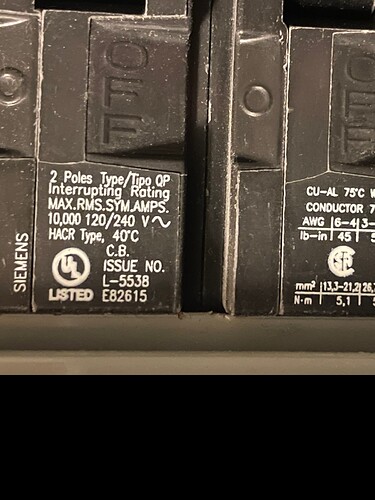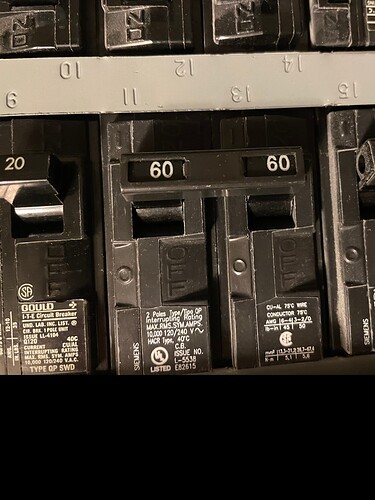Even if he had dropped a thermometer in there, it would have been at ambient temp unless he flushed first.
Sounds kind of pathetic (for me not being able to do it myself) but the initial repair was new dishwasher install. It was -4 degrees out so I immediately thought busted pipe. They came out quickly and diagnosed it as broken dishwasher lines/valve, not 100% sure since I was relieved to hear it wasn’t a frozen pipe. They recommended it would be cheaper to just get a new dishwasher and have them install it vs trying to fix it. I imagine the dishwasher was 15+ years old so that sounded reasonable to me.
Day after install, I noticed water dripping from the same spot in the basement but also a ton more water over by my HVAC on the opposite side of the wall. I was told the dripping water was because he hadn’t properly fitted the dishwasher in the right spot so it dripped some. 20-30 minute fix. NBD.
The leaking HVAC was diagnosed as a broken back flow preventer valve. I was told that when they turned the water on/off something must have happened to the valve causing it to break. Replaced valve was another 30 minute or so fix. I understand the busted HVAC valve could have happened at any point of turning the water on/off so I wasn’t that upset to be charged for that.
It’s not so much the issues that bothered me though but getting charged for time they actually weren’t working. I asked him “So if your guy comes out and worked for 1hr2mins you’re going to charge for two full hours?” “YES” was the emphatic response. Seems shady to me. But idk the industry standards.
The people who sold our house to us did it as a flip. They tried a little “fancy” flooring pattern in the foyer, but in less than a year, it started warping because of improper installation. They were actually very cool about it and hired someone to redo it.
We’ve had tons of plumbing problems in the 17 years we’ve lived in our house, usually having to do with the upstairs bathrooms, so the ceilings in our kitchen and downstairs bathroom are beat to shit.
The latest was a few months ago. Heard what sounded like a drip in the wall in the downstairs bathroom, which would indicate something coming from the upstairs hallway bathroom. Called a plumber, guy came out, did some quick checks, said it was all good. The next day, an wet spot manifested in the kitchen ceiling, which would actually indicate something coming from our master bath (both upstairs bathrooms share a wall).
Called back, they sent the power sales plumbers out, who found all sorts of shit and gave us like a $5,000 estimate. I rejected some things, accepted others. One big thing they found was that the pressure coming into the house was way too high, which they said could have caused some of our previous issues (we’ve had three or four pinhole leaks in copper pipes). I let them fix that.
Out of curiosity, I asked how much it was to fix the cold water handle on our master bath sink - I believe it needed a new cartridge. $300. Fuck that. I replaced the entire faucet for like $60.
So they had a different plumber come out to actually do the repairs. He had to cut a hole in the kitchen ceiling to try to diagnose the leak. After three trips to our house, he never found it, nor did he find anything wrong in the hallway bathroom. It wasn’t a consistent leak, so it was hard to diagnose. Only happens sometimes when I took a shower. But still, figure it out, man.
Eventually I found the problem in BOTH bathrooms and fixed it myself. In the hallway bathroom, some caulk at the corner of the tub where it meets the floor had chipped away and there was a small crack/hole in the floor. When my son would shower, he would let tons of water get out, which found its way into the crack. Just cleaned it up and recaulked.
In the master, it was as simple as some horizontal cracks in the grout starting at the soap dish. Regrouted it and it’s been fine. Still have a hole in the kitchen ceiling, though.
It’s a heater! It’s warming the room.
As long as you don’t flush too often the heat is going towards warming the bathroom.
Neat I’ve never seen one of those, it’s so the outer tank will not have droplets of condensation eh?
I’ve occasionally seen a tank sweat, and u can thereby make out the delineation where the water level is in the tank, from beads on the exterior of the tank. Mix it so it is closer to room temp is the fix
I’ve seen mixing valves at bathroom faucets etc in grocery stores or McDonald’s bathrooms, to prevent scalding, but not for toilet tank sweating lol
Well, if we have one of those, it’s inside the wall. Guess I’ll keep an eye out if we ever rip out the drywall.
I thought they used them so they could get more out of their hot water heater. If you have got 50 gallons of 140 degree water, you can mix it with some cold water to get > 50 gallons of 130 degree water.
Here’s my situation. My old microwave broke, so we’re replacing it with a new one. However, it turns out that our old microwave ran off of a 15-amp circuit, while the new one requires a 20-amp circuit. I looked at the circuit breaker, and it turns out that the “microwave” outlet is actually a 60A switch. It also turns out that the same circuit controls a bunch of other stuff (1 kitchen outlet, the lights but not the outlets in the master bedroom, and lights and outlets in the master bath.). To make matters worse, the kitchen outlet is where we have our electric kettle and Keurig plugged in, and we occasionally have had issues with that breaker tripping.
Is there any way it’s going to be safe to just swap out the outlet with a 20A and put the new microwave in? On the one hand, if the wires are big enough for 20A (assuming I can check this physically somehow?) and the breaker has a 60A switch, seems like it should be OK? OTOH, seems ominous that we’re already overloading the circuit with the old microwave, although maybe we can move the kitchen appliances elsewhere. It also seems worrisome that this circuit has its fingers in so many pies.
Assuming it’s not possible to just swap out the outlet, is an electrician going to be able to do anything without tearing up my house? The outlet in question is behind cabinets and tile and, as previously noted, the circuit has spread through my house like the hyphae of some parasitic fungus. Do I just need a lower-power microwave?
Imagine that is the case in some applications. Dunno if it’s more efficient to heat and mix or just heat
Went to this relatively new hotel with an old codger coworker a couple years back, and the symptom throughout the hotel was intermittent hot water, and my buddy deemed it the fault of this correspondingly large mixing valve, just downstream from massive water heaters or boilers in a big mechanical room.
The mixing valve had built up with deposits over the few short years, owing to the calcification that occurs from the science of processing all that hot water.
Wasn’t gonna be an easy fix either. Shutting the water off and disturbng the system with the actual repair and then repressurization, could agitate scaling within the pipes, and once so released from attachment to the pipe, travel throughout the building and corrupt orifice and showerhead and faucet aerator etc lol
They had these big softeners on the opposite side of that large mechanical room, too, but dunno how well maintained or effective they could’ve possibly been
A cursory look at the internet says you need 12 gauge wire to support a 20 A circuit. There’s a nonzero chance that’s what you have there. I’d cut the power, pop out the plug there, and measure the wire gauge. If it’s just 14, you should probably rewire the circuit, but if it’s 12, then you can just upgrade the breaker and be good to go. Swapping out a breaker is surprisingly easy.
I wouldn’t be surprised if it was more energy efficient to just heat, but the reason for the valve (I thought) is just so that you will have more water at the desired temp before you run out. Even if the energy costs are a bit higher, you just get more water at the desired temp.
Sure you could get a larger capacity heater or tankless, but maybe the space won’t accommodate it.
gotcha 
I’m sure I’m using the wrong terminology. Here’s what I know:
- The outlet the old microwave used was a normal-looking two-outlet receptacle.
- The new microwave needs an outlet with one of the two vertical thingies being horizontal.
- There’s a double switch with 60 written on it in my breaker box, and when I flip it, the microwave outlet and some other things stop working.
I think you should run your old microwave inside your new microwave to see if it creates a wormhole or something.
Disclaimer: I am not handy but I’ve watched a lot of sci fi.
OK, I got myself tangled up as to what you were talking about swapping and what needs to be done. Don’t change the breaker. It can offer more than enough juice for the new microwave (and everything else on that circuit). Sounds like you would need to change the outlet, which can probably be done. I would definitely verify that the wiring into that outlet is 12 gauge or thicker. If so, you should be good to go to swap out the outlet and and install the new microwave. This is what Max already said, but since it’s different from what I said, I wanted to be clear that he was right.
Thanks guys! Will try this today. If I stop posting forever, it’s because your bad advice got me electrocuted and I’m dead!
Sounds like a job for @microbet

